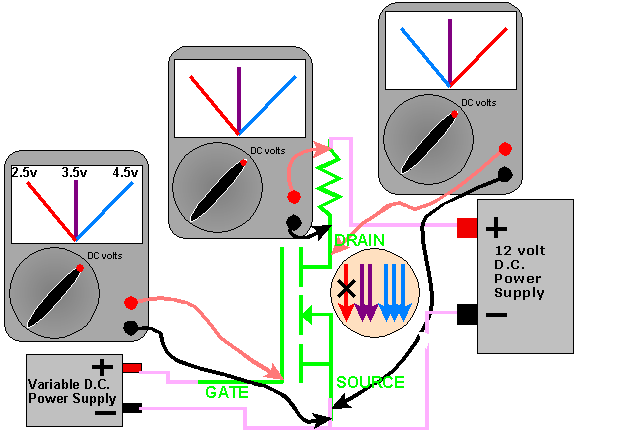مقاله های علمی دانشجویان |

اساس مخابرات ماهواره ای به منظور دریافت تصاویر تلویزیونی بر مبنای ماهواره ایست که برنامه هایی را برای مناطقی از کره زمین( که توسط آنتنهای سطحی قابل پوشش نیست) رله مینماید. ماهواره هایی که برای این منظور به کار می آیند به طریقی در مدار خود قرار می گیرند تا همواره با سرعتی معادل سرعت زمین حرکت نموده و پیوسته بر روی نقاطی از زمین پایدار بمانند. در نتیجه این امکان را به وجود می آورد تا بتوان از آنتنهای گیرنده ای (آنتنهای بشقابی )که همواره بر روی مو قعیت خاصی مستقر شده اند استفاده نمود.
بدین ترتیب هر آنتنی که در محدوده تشعشع ماهواره قرار داشته باشد میتواند اصوات و تصاویر را با کیفیتی بالا دریافت نماید. ماهواره های متعددی به منظور مخابره برنامه های تلویزیونی در نظر گرفته شده اند. این ماهواره ها در اصطلاح به نام ماهواره های مخابرات مستقیم مطرح گردیده اند. فرستنده چنین ماهواره هایی به حدی قوی ست که تنها با بشقابک های کو چکی می توان امواج ان را به راحتی در یافت نمود.
بسیاری از کشور های اروپایی از جمله فرانسه/ آلمان در صدد برنامه ریزی جهت ارسال ماواره های مخابرات مستقیم در مدار های متفاوتی به دور زمین هستند. البته انگلستان نیز طرحهایی در این زمینه در دست داشت که به دلیل مخارج بسیار بالای آن به فراموشی سپرده شد.
تا زمانیکه ماهواره های مخابرات مستقیم هنوز به طور گسترده مورد استفاده قرار نگرفته باشند نتیجتا دست اندرکاران از ظرفیت آزاد ماهواره های مخابراتی برای مخابره برنامه های تلویزیونی استفاده می نمایند.
فرستنده های اینگو نه ماهواره ها ضعیف تر از فرستنده های ماهواره های مخابرات مستقیم می باشند. ولی با استفاده از آنتن های بشقابی بزرگتر به قطر 1.8 متر می توان از قابلیت در یافت خوبی بر خوردار شد.
در حال حاظر دو ماهواره از این نوع به منظور مخابره بر نامه های تلویزیونی برای نواحی غربی اروپا مورد استفاده می باشد. این دو ماهواره بر نامه های مخابراتی خود را بر روی 18 کانال مختلف که اکثرا به زبان انگلیسی ست ارسال می دارند. هر دو ماهواره از انواع ماهواره های مخابراتی هستند که به منظور بر قرار نمودن خطوط تلفن معمولی بین اروپا و آمریکا به کار می آیند.
اخیرا سیستم جدیدی به نام سیستم NESAT توسط کار خانه NEC طراحی و ساخته شده که مزیت کاربردی ان در این است که با اتصال آن به تلویزیون های معمولی می توان از کانال های مختلف ماهواره ای استفاده نمود. اهمیت این سیستم به علت عدم نیاز به سیم کشی جهت دریافت برنامه های ماهواره ایست.
به علاوه با کاربرد سیستم مد نظرنیاز به استفاده از سیستم های ماهوارهای مخابرات مستقیم برای بر نامه های تلویزیونی منتفی می شود. سیستم از مزایا و مشخصات میژه ای بر خوردار است که این عوامل می توانند موجب شوند تا این پدیده نوظهور به سادگی در رقابت با هر گو نه وسایل مشابهی همچنان در زمینه تغذیه بر نامه های تلویزیونی پیش تاز بوده و با استاندارد های بالای بازار های انگلیس و کل ارو پا هماهنگ بوده و مورد استقبال چشمگیر واقع شود.
سیستم NESAT از سه قسمت عمده تشکیل یافته است: آنتن بشقابی / مبدل نویز پایین و تیو نر داخلی .
البته در حال حاضر به منظور نصب سیستم نامبرده باید از مجوز قانونی بهره مند بود . لیکن پیش بینی می شود که در آینده نزدیک امکانات و ازادی بیشتری برای نصب و کاربر خانگی سیستم فوق فراهم آید.
به همین شکل بسیاری از قوانین مربوط به مخایرات تلویزونی حاضر در گذشته ای نه چندان دور محدو دیت بیشتری برای استفاده کنندگان آن اعمال می نمود و ابن در حالی بود که استفاده از مخاربرات ماهواره ای در آن لحظه خوابی بیش قلمداد نمی شد!!


|


|
